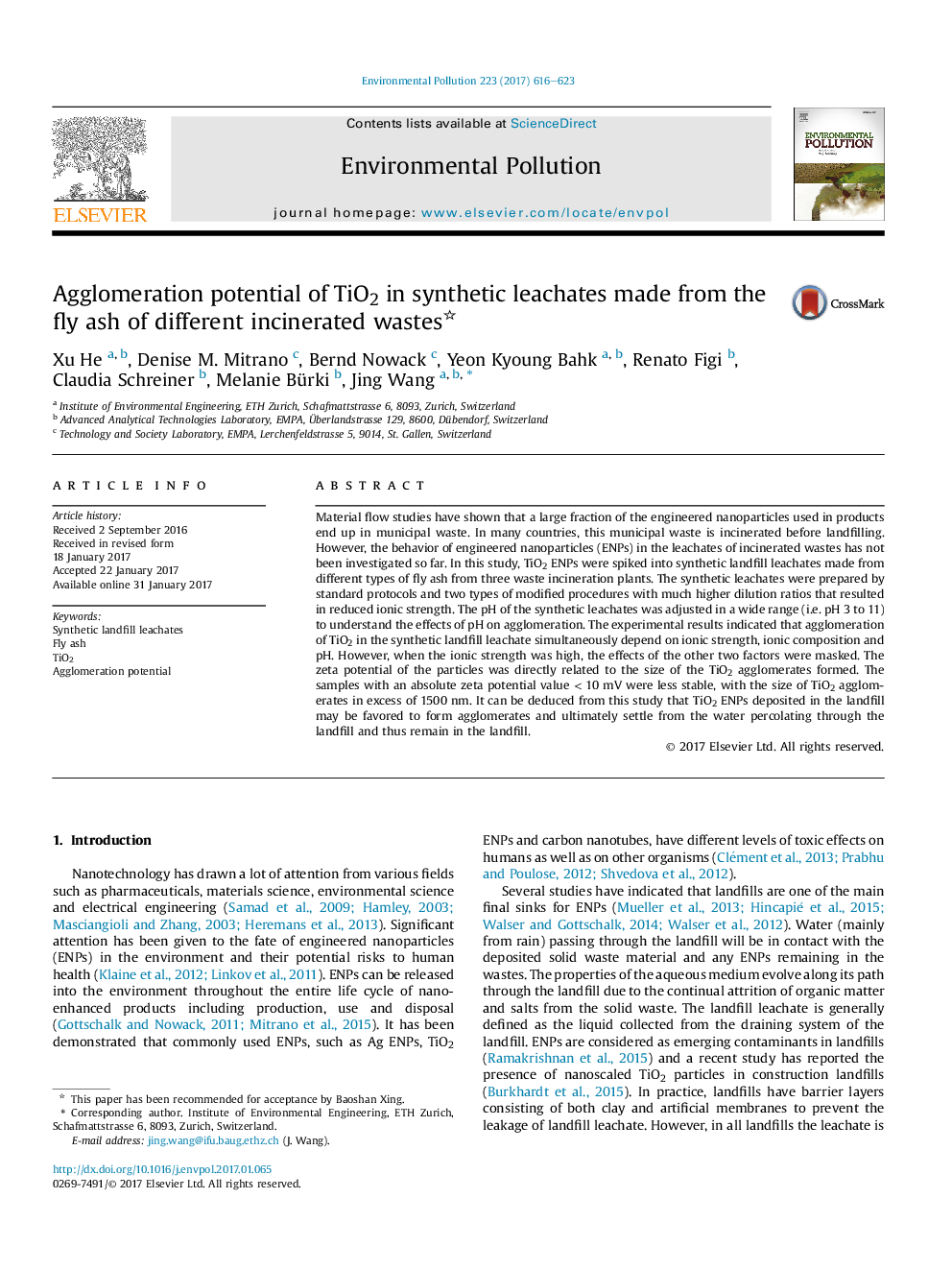| کد مقاله | کد نشریه | سال انتشار | مقاله انگلیسی | نسخه تمام متن |
|---|---|---|---|---|
| 5749342 | 1619150 | 2017 | 8 صفحه PDF | دانلود رایگان |

- The behaviors of TiO2nanoparticles in the synthetic landfill leachate made from fly ashes are studied for the first time.
- Two new types of modified procedures are proposed to make the synthetic landfill leachates.
- Ionic strength is the dominant factor to influence the agglomeration of TiO2nanoparticles.
- When the absolute value of the zeta potential is smaller than 10 mV, large agglomerates of TiO2 are always formed.
Material flow studies have shown that a large fraction of the engineered nanoparticles used in products end up in municipal waste. In many countries, this municipal waste is incinerated before landfilling. However, the behavior of engineered nanoparticles (ENPs) in the leachates of incinerated wastes has not been investigated so far. In this study, TiO2 ENPs were spiked into synthetic landfill leachates made from different types of fly ash from three waste incineration plants. The synthetic leachates were prepared by standard protocols and two types of modified procedures with much higher dilution ratios that resulted in reduced ionic strength. The pH of the synthetic leachates was adjusted in a wide range (i.e. pH 3 to 11) to understand the effects of pH on agglomeration. The experimental results indicated that agglomeration of TiO2 in the synthetic landfill leachate simultaneously depend on ionic strength, ionic composition and pH. However, when the ionic strength was high, the effects of the other two factors were masked. The zeta potential of the particles was directly related to the size of the TiO2 agglomerates formed. The samples with an absolute zeta potential value < 10 mV were less stable, with the size of TiO2 agglomerates in excess of 1500 nm. It can be deduced from this study that TiO2 ENPs deposited in the landfill may be favored to form agglomerates and ultimately settle from the water percolating through the landfill and thus remain in the landfill.
116
Journal: Environmental Pollution - Volume 223, April 2017, Pages 616-623